Search
To search for an exact match, type the word or phrase you want in quotation marks.
A*DESK has been offering since 2002 contents about criticism and contemporary art. A*DESK has become consolidated thanks to all those who have believed in the project, all those who have followed us, debating, participating and collaborating. Many people have collaborated with A*DESK, and continue to do so. Their efforts, knowledge and belief in the project are what make it grow internationally. At A*DESK we have also generated work for over one hundred professionals in culture, from small collaborations with reviews and classes, to more prolonged and intense collaborations.
At A*DESK we believe in the need for free and universal access to culture and knowledge. We want to carry on being independent, remaining open to more ideas and opinions. If you believe in A*DESK, we need your backing to be able to continue. You can now participate in the project by supporting it. You can choose how much you want to contribute to the project.
You can decide how much you want to bring to the project.
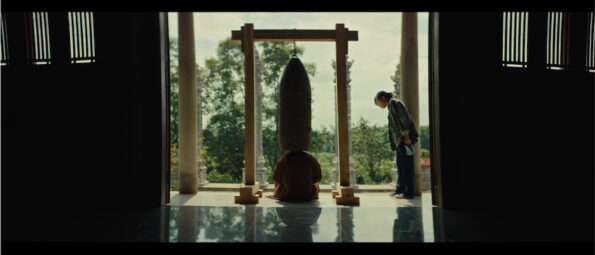
Our Ghosts Live in the Future is an exhibition by Tuan Andrew Nguyen, winner of the 8th annual Joan Miró award. The exhibition presents short films, sculptures and archives dealing with the reconstruction of memory and the social fabric of colonialist projects and armed conflicts perpetrated in the territory of Vietnam, Laos and Cambodia during the 20th century.
You have to walk upstairs to find Tuan Andrew Nguyen’s Our Ghosts Live in the Future exhibition, and the first thing that appears before your eyes is something that is in the code of the place, that is, a reference to Calder with sculptures very close to his language though with a different function. The remains of weapons, casings of the bombs found in Vietnam, appear among the mobile pieces. With this complete image, the abstract composition suddenly ceases to be abstract and instead can be seen as static portraits of several bombings. This image, halted in time the instant before the detonation, gives us a guideline of the journey we are about to embark upon. We must first cross a veil, and then another and another one, in order to intimately access the subject on display.
The first veil opens up to mystery, but also a concrete and inescapable reality, that is, the bombs, whose ominous presence immediately triggers anguish. The second room houses The Sound of Cannons, Familiar as Sad Refrains, which puts two audiovisual stories into dialogue: US military propaganda and a documentary of the recent unearthing of bombs found. The title of the exhibition slowly begins to take on a new meaning, also expressed in Martina Millà’s curatorial text, about whether wars ever really end.
In this work, the voice of the bomb appears, a voice of a bomb that did not explode. Of the 7.7 million tons of bombs dropped during the 20 years that the US war lasted, many bombs did not explode, some exploded later, and some that might still detonate remain buried. The past, an imminent danger, with the power of a destructive explosion or of silence, is dug up. In its silence, the bomb speaks about itself, about its manufacture in distant lands, about military operations, about its nesting in an Asian jungle. A Vietnamese song accompanies the tale, as singing is always linked to memory.
Beyond another veil we find ourselves in a cinema, the heart of the exhibition. In a short film, fairly realistic characters are portrayed, although fiction enters forcefully to speak of the ineffable. The exhibition is a great exercise in portraiture that elevates the voices of people relegated to oblivion, and represents them in the transformative process of elaborating trauma. To forget is to truly die, everyone is clear about that, and in their different approaches to memory each character offers a strategy: cynicism dissolves in the transcendence of art, physical and mental escapism from pain is conducted by means of sound, destruction is faced with inner peace, humility and affection must be bravely rescued from the depths of each person.
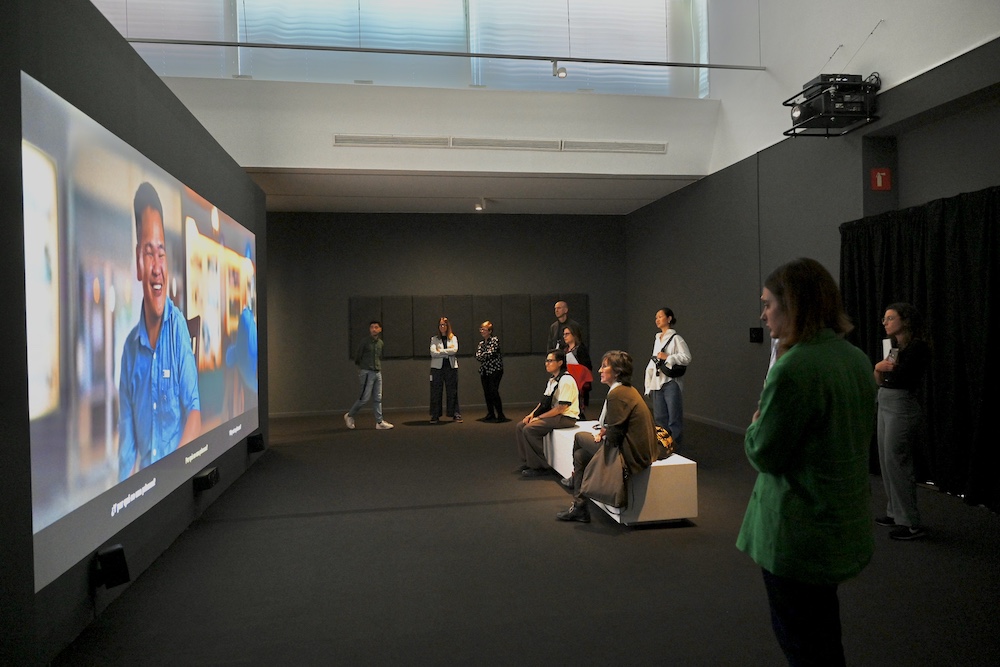
Exhibition view © Fundació Joan Miró. Photo Pep Herrero
In The Unburied Sounds of a Problematic Horizon, the reincarnation of Alexander Calder is also displayed, connecting the journey and brings us back to the question about the link between context and work. What does the reincarnation of a practice mean in a context that does not correspond to it discursively? From where do we see these works, who are we in this plot? The arm that extends outwards with a reference to Calder introduces us to a story about displacement.
In the relationship that the exhibition proposes between the terror of war (concrete, carnal, urgent) and the symbolic value of art (as a cultural and intellectual convention), sound is capable of transcending and installing in the body the experience that is expressed on the screens. The sound shows that one can believe in what is not seen, or that it is more feasible to understand what is elusive if the whole body is engaged.
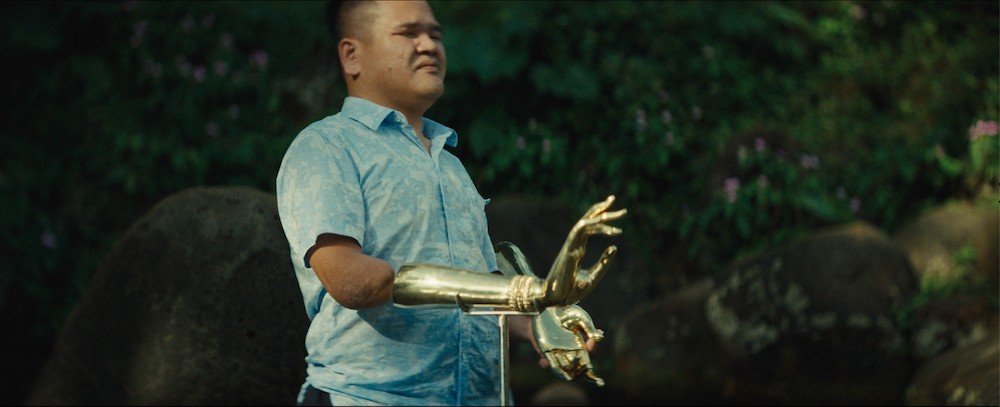
“The Unburied Sounds of a Problematic Horizon“, filmstill
Behind other veils, the sound experience embodies new stories, and the emotional intensity increases through narrative strategies. We never know if the adventure continues until we cross the veil. In the next room there is a family album and the sound of a voice rehearsing a dialogue or singing a song, always in an endearing tone. As we go through the images we find the record of soldiers recruited in French colonies and the families they formed during their years of service in Vietnam. This is the story of the tirailleurs, a socio-political phenomenon of French colonialism, which permeates the social fabric of the inhabitants of these colonies. The case is presented on the intimate scale of their homes, unfolding plots as complex and heartbreaking as they are unimaginable for those outside the conflict. The sound of the narrator’s voice weaves together the experience of multiple perspectives produced by the arrangement of the screens. From the center of the experience, it is possible to view different scenarios about the same story and, without ever losing sight of it, to find signs in the different images. Once again, the gesture integrates us by appealing to our presence as witnesses of the drama.
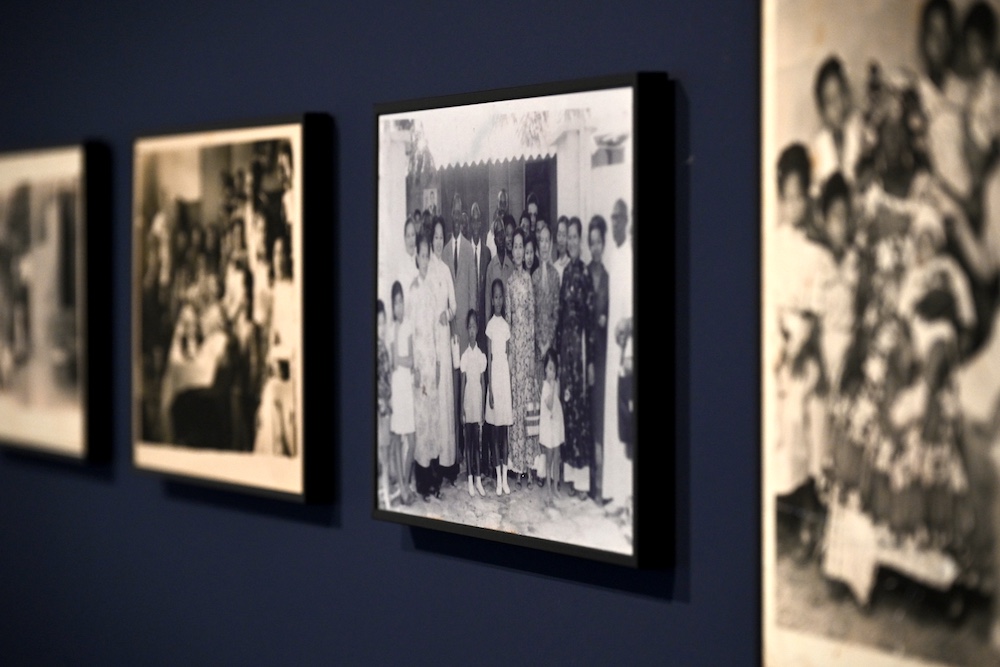
tirailleurs © Fundació Joan Miró. Photo Pep Herrero
Situated within the story of the tirailleurs, a short film is displayed in the exhibition as the last portal, one capable of connecting us with otherness, with our dead, with our future ghosts. A poetic operation of transformative power structures the story of a woman whom history would never have rescued, and it fulfills the double function of restoring the memory of the defeated and offering us a mirror of the current miseries of society. However, in the balance of the symbols and their staging, hope and the feeling of having achieved justice prevail. Perhaps it is the triumph of faith over destruction that articulates the elements that are the general subject of the exhibition. Because No One Alive Will Listen is a mundane and unfortunate story that projects itself into infinity thanks to the generosity and sublime courage of its protagonist.
The last veil returns one to their own life with everything that the exhibition has managed to teach us, something that would not be possible through any discipline devoted to large geopolitical narratives. The tension between memory and forgetting, which makes up the body of this work, is installed somewhere in our consciousness through the sharpness and reverberating tremors of the sound work. If our ghosts live in the future, that means that we are still alive. We exist in a temporality that coexists with future physical and memorial death, with the unresolved problems that our ghosts and the generations that live with them will have to face, among the invisible tribes of those who still love.

Tuan Andrew Nguyen with his artworks © Fundació Joan Miró. Photo Pep Herrero
(Foto de portada: Tuan Andrew Nguyen, The Unburied Sounds of a Problematic Horizon, filmstill)
Our Ghosts Live in the Future can be visited until September 24, 2024 at Fundació Miró.
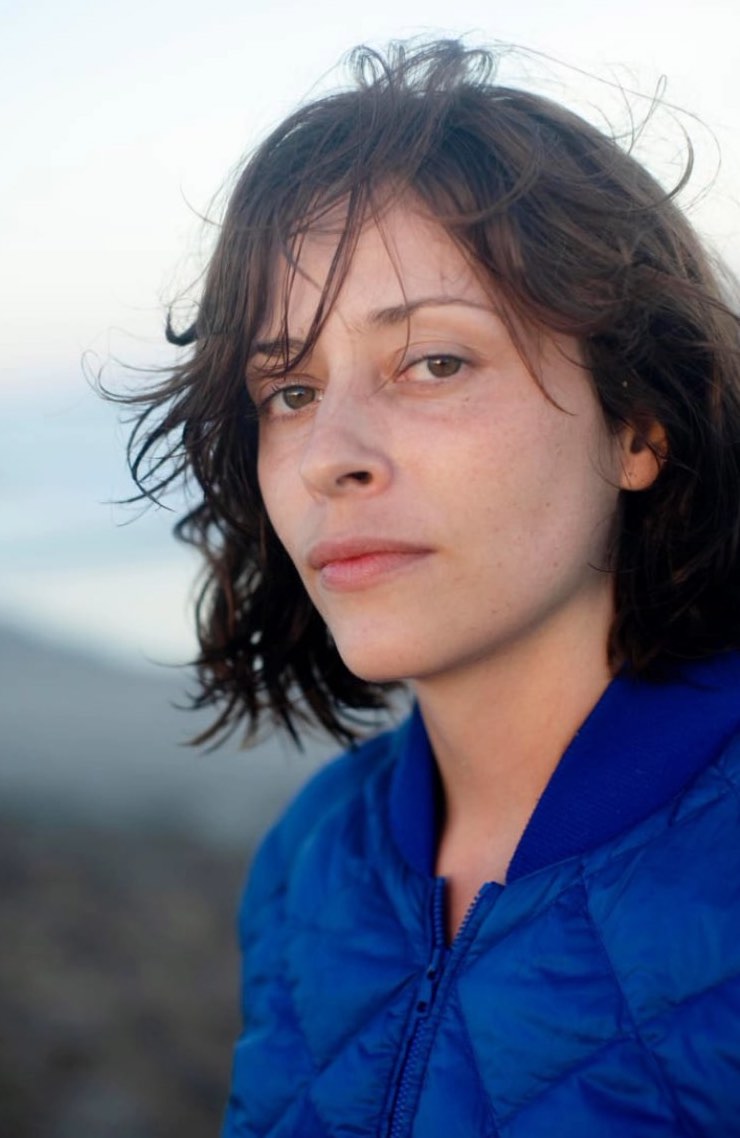
Merlina Rañi (Brazil, 1987) is an art curator focused on digital media and scientific dissemination. She researches virtual environments and their relationship with physicality, her practice revolves around the production of narratives. Her latest productions focus on the impact of technological abstraction on political and affective aspects of society, around axes such as simulation, language, complexity and automatic learning.
https://merlinarani.xyz/
IG / X: @merlina_rani
"A desk is a dangerous place from which to watch the world" (John Le Carré)